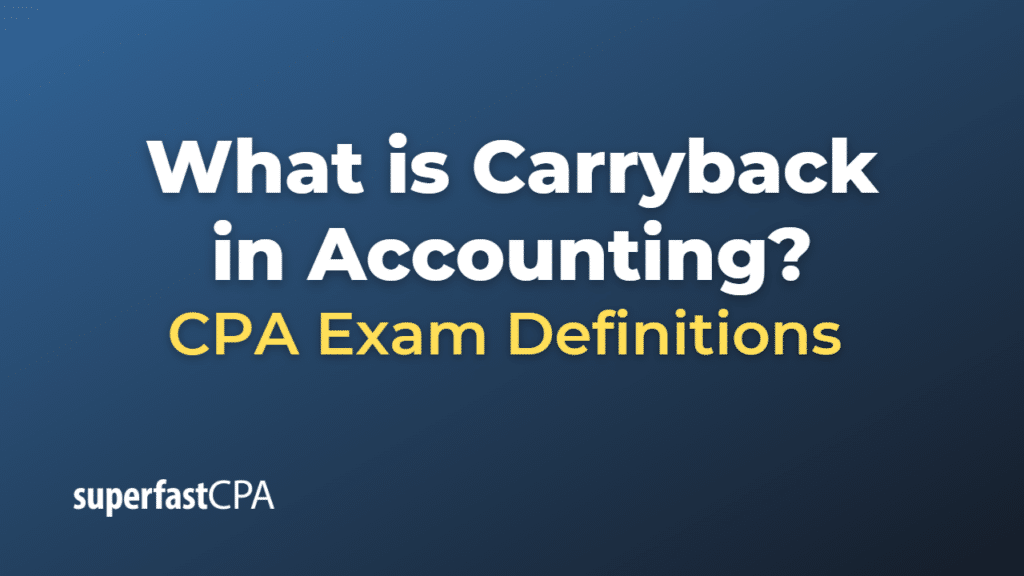Carryback
In accounting, a carryback (also known as a “tax loss carryback”) refers to a tax provision that allows a company or individual to apply a net operating loss (NOL) from the current year to previous years’ taxable income. This provision enables taxpayers to reduce their tax liability for prior years by offsetting the NOL against the taxable income from those years, resulting in a refund of taxes paid in those years.
Carryback provisions vary depending on the jurisdiction and tax laws. For example, in the United States, the Tax Cuts and Jobs Act (TCJA) of 2017 temporarily eliminated the carryback provision for tax years 2018-2020, allowing only a carryforward option. However, the Coronavirus Aid, Relief, and Economic Security (CARES) Act of 2020 temporarily reinstated the NOL carryback provision for tax years 2018-2020, allowing businesses to carry back NOLs for up to five years.
A carryback can provide companies with financial relief during periods of economic downturn or financial hardship, as it allows them to recoup taxes paid in previous years when they were profitable. This can provide an infusion of cash that can be used to cover operating expenses, invest in growth opportunities, or repay debts.
It’s important to note that carryback provisions are subject to specific rules and limitations depending on the jurisdiction and the tax laws in place. Companies should consult with tax professionals or financial advisors to determine the appropriate application of carryback provisions and to ensure compliance with tax regulations.
Example of Carryback
Let’s consider a fictional company, “GadgetWorld Inc.,” that operates in the United States and is subject to federal income tax. The following information shows GadgetWorld’s taxable income and tax rates for the past five years:
- 2023: Taxable income = $0 (Net Operating Loss of $500,000)
- 2022: Taxable income = $300,000 (Tax rate = 21%)
- 2021: Taxable income = $200,000 (Tax rate = 21%)
- 2020: Taxable income = $400,000 (Tax rate = 21%)
- 2019: Taxable income = $350,000 (Tax rate = 21%)
In 2023, GadgetWorld Inc. experiences a net operating loss (NOL) of $500,000. The company decides to use the carryback provision allowed under the CARES Act, which permits NOLs to be carried back for up to five years. Here’s how the carryback process would work for GadgetWorld Inc.:
- First, the company will carry back the entire $500,000 NOL to offset its 2022 taxable income of $300,000. This will result in a tax refund for 2022. The remaining NOL of $200,000 ($500,000 – $300,000) will be carried back to the next preceding tax year.
- Next, GadgetWorld Inc. will carry back the remaining $200,000 NOL to offset its 2021 taxable income of $200,000. This will result in a tax refund for 2021. The NOL has now been fully utilized.
The total tax refunds GadgetWorld Inc. would receive from the carryback are as follows:
- 2022: Tax refund = $300,000 x 21% = $63,000
- 2021: Tax refund = $200,000 x 21% = $42,000
GadgetWorld Inc. would receive a total tax refund of $105,000 ($63,000 + $42,000) from carrying back the NOL to previous years. This cash infusion can help the company manage its financial situation during the challenging year in which it experienced a net operating loss.













